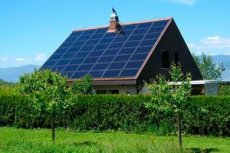New publications
Solar power is getting cheaper
Last reviewed: 02.07.2025

All iLive content is medically reviewed or fact checked to ensure as much factual accuracy as possible.
We have strict sourcing guidelines and only link to reputable media sites, academic research institutions and, whenever possible, medically peer reviewed studies. Note that the numbers in parentheses ([1], [2], etc.) are clickable links to these studies.
If you feel that any of our content is inaccurate, out-of-date, or otherwise questionable, please select it and press Ctrl + Enter.

Solar energy has received many development opportunities in 2016 and today solar energy is the least expensive type of electricity. Now, according to some data, in developing countries, wind turbines are much more expensive to build than solar ones.
Of course, people always knew that solar energy would eventually become more affordable than wind energy, but no one thought it would happen so quickly. Solar energy is already far ahead of wind energy, but it is also already a worthy competitor to fossil fuels.
The transition to alternative energy sources can be costly in general in high-income countries, where demand for electricity is constantly growing and new solar installations must compete with many existing coal and gas plants. But in countries where new clean power plants are installed in short periods of time, clean power plants can outperform all other technologies.
In recent years, investors have been pouring more and more money into solar energy, just a few years ago this kind of investment simply did not exist. It is worth noting that significant investments in the development of solar energy have been made by China, where this industry is rapidly developing.
An interesting fact is that developing countries invest much more in the development of renewable energy sources than rich countries, for example, last year they spent more than $150 million in total, which is much more than the amount that countries with a high standard of living spent.
According to forecasts, the current situation will not change in the near future, developing countries will continue to invest in alternative energy sources. But installing wind or solar installations takes quite a long time, so fossil fuels remain an affordable and time-efficient way to obtain electricity when there is no wind or sun. Experts are confident that natural gas or coal will still occupy the main positions for supplying electricity to poor countries.
But some countries are seriously concerned about climate change and intend to switch to environmentally friendly energy sources, if not completely, then at least partially. For example, Canada, the United States and Mexico signed an agreement this summer, according to which in 10 years half of the electricity produced must come from environmentally friendly sources.
The leaders of the countries believe that the goals set are quite tough, but they can be achieved, and the results of the transition to renewable energy sources are necessary for all participants in the agreement. By the way, the US President at that time admitted that his country was partly to blame for climate change on the planet.
Read also about how solar power plants will soon produce oil.
Canada currently uses more than 50% of its energy from hydroelectric, nuclear, wind and solar power, while Mexico's clean energy sources still supply less than 20%.
 [ 1 ]
[ 1 ]
